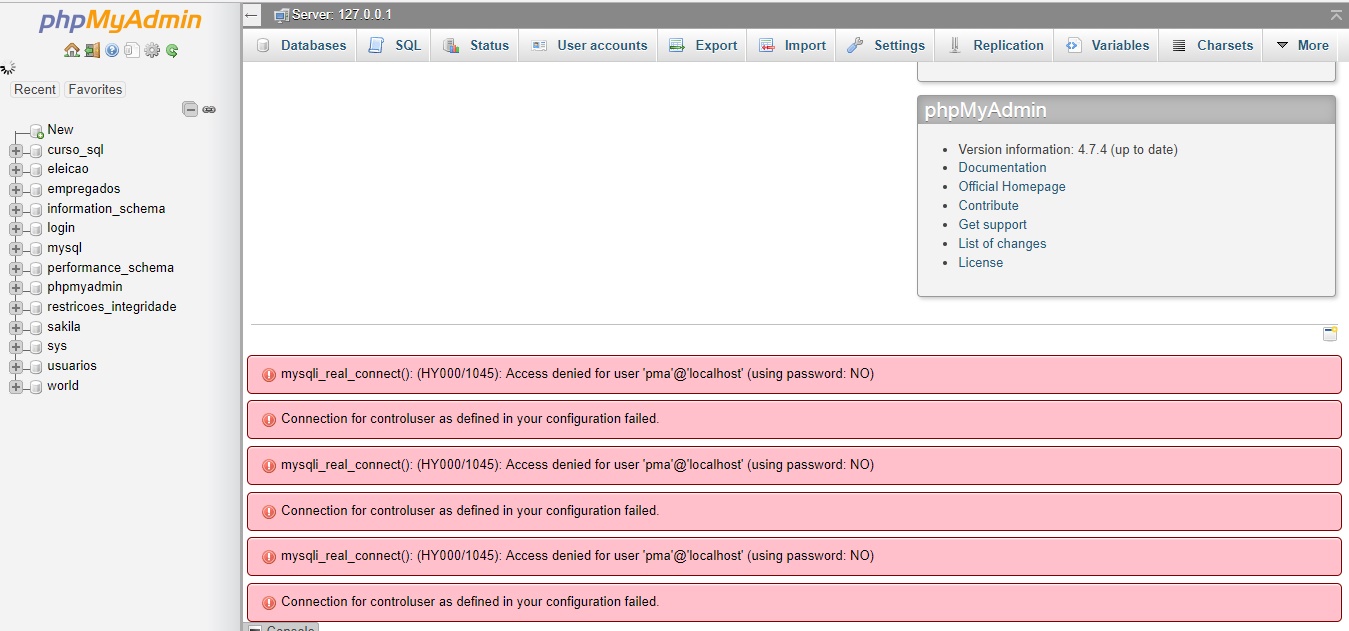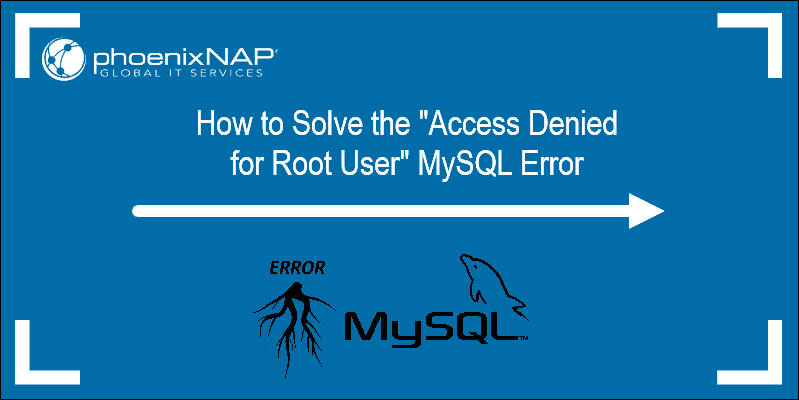

- MAC OS X ACCESS DENIED FOR USER 'ROOT'@'LOCALHOST' HOW TO
- MAC OS X ACCESS DENIED FOR USER 'ROOT'@'LOCALHOST' PASSWORD

Stop Your Server First sudo service mysql stop Make MySQL. So I had to add the following to my /etc/my.cnf file under the appropriate heading: Example 1: ERROR 1045 (28000): Access denied for user rootlocalhost (using password: NO). The tables in this schema are actually views not real tables and there is no database directory with that name. NOTE: I had a number of problems trying to use "localhost" on my mac - it seems that localhost resolves to multiple interfaces which mysql doesn't like. Access denied for user 'root''localhost' to database 'informationschema' INFORMATIONSCHEMA is a virtual database where information about all the other databases that the MySQL server maintains are stored. NOTE: mysql -u root will throw error ERROR 1698 (28000): Access denied for user rootlocalhost so use sudo to run this command. Now you can log into mysql (so long as mysqld_safe ran without any problems) using:Īt the mysql prompt, you can check what is listed as the host for the user you are trying to login as - if it is not localhost, use the appropriate SQL command to set it to localhost. This should startup your mysql server without loading any of the grant table infoģ. usr/local/mysql/bin/mysqld_safe -skip-grant-tables use mysql select host,user,password from user where user 'root' (observe your existing passwords for root). to Maxlocalhost identified by maxkim mysql> grant all privileges on TESTDB. Once you are sure that there are no other mysqld processes running, issue the following command at the terminal prompt: OperationalError: (1045, Access denied for user Maxlocalhost (using.
MAC OS X ACCESS DENIED FOR USER 'ROOT'@'LOCALHOST' HOW TO
There are a number of postings on the web about how to do this (ps -elf | grep mysqld lists the processes, kill -9 pid) OR use /usr/local/mysql/support-files/rver stop command - the latter may not remove orphaned processes though)Ģ. First, ensure that there are no mysqld processes running. This becomes a "chicken and egg" problem - you can't get into mysql to change the database and you can't connect until you've fixed the problem somehow.ġ.
MAC OS X ACCESS DENIED FOR USER 'ROOT'@'LOCALHOST' PASSWORD
Either the user's host entry doesn't match or there is no user entry for the user id and password you have entered. Once you're in the console again you can reset the password to empty like: ALTER USER 'root''localhost' IDENTIFIED WITH mysqlnativepassword BY '' And it should start to allow you with just sudo mysql as before. The error message "Access denied for implies that the user table in the mysql installation and database was not setup correctly. sudo mysql -u root -p and entering the password from your ALTER USER statement when prompted.

After much digging around, I have found the solution - and decided to post my findings.


 0 kommentar(er)
0 kommentar(er)
